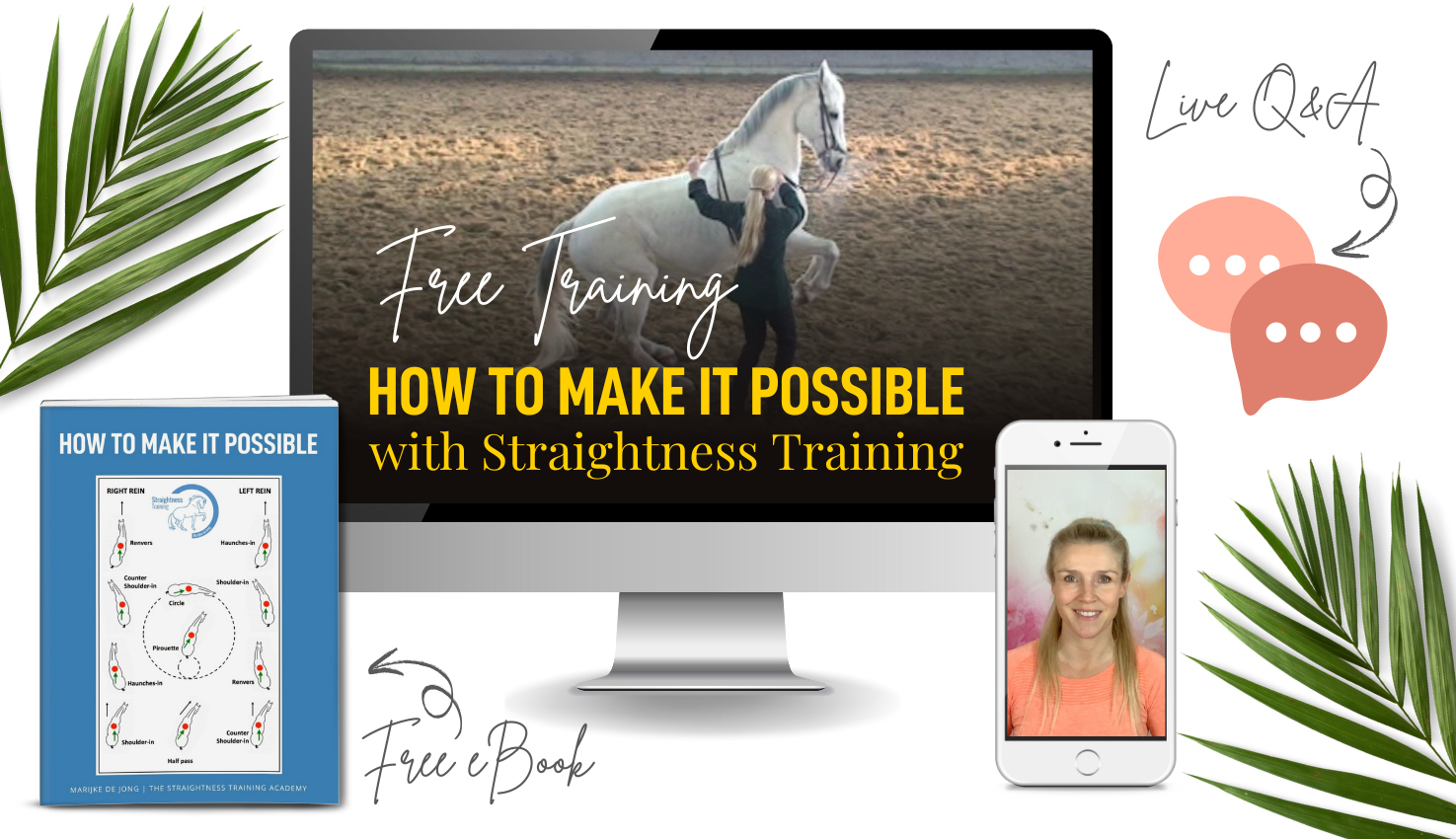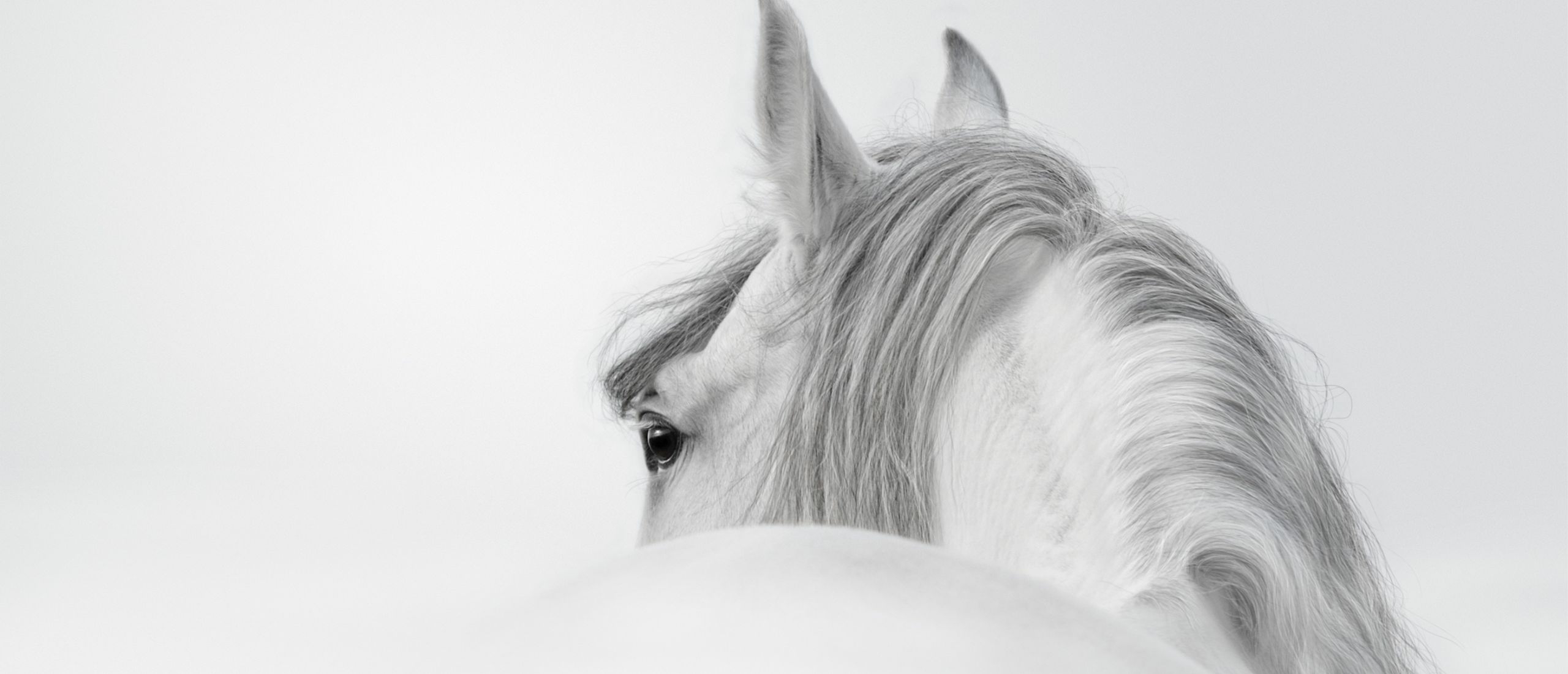
Dimensions of Asymmetry
Just like every human, every horse is left- or right handed, both in the front legs and the hind legs. Also, the horse is bent to the left or right in its body and it carries more weight on the front legs than on the hind legs.
In the 17th century, Grandmaster in the art of riding Antoine de Pluvinel (1552 – 1620) already described the natural asymmetry of horses. Also, François Robichon de La Guérinière (1688 – 1751) and Gustav Steinbrecht (1808 – 1885) wrote about this phenomenon in their books.
You see, really every horse is naturally asymmetrical. But there is not just one single kind of asymmetry:
The natural asymmetry can be divided into 8 physical dimensions
Can you imagine that?
Anyway, it’s important to know them, so let me introduce them all:
![]()
1. Lateral asymmetry: Every horse bends more easily to one side than to the other. The horse has a concave side and a convex (stretched) side. This is also called the lateral asymmetry.
2. Horizontal imbalance: Naturally, all horses carry about 3/5th of their weight on the shoulders and 2/5th on the hind legs. This is also called the horizontal imbalance.
3. Front legs: Just like humans, horses are left- or right-handed, therefore the weight on both front legs is not equally divided.
4. Hind legs: One hind leg usually is more pushing, the other one carries better. The carrying hind leg is usually more supple and steps under the center of mass easily. The pushing hind leg is usually longer and straighter and can push the horse easily forward.
5. Front-back ratio: Naturally, the horse walks with its shoulders crooked in front of its hips. When the horse is not straightened along the wall of the arena, this effect is enhanced, because the shoulders of the horse are narrower than its hips.
6. Diagonal imbalance: A horse that is not corrected for natural asymmetry and natural balance, has the tendency to lean on the inside shoulder or to fall out over the outside shoulder. This creates a diagonal imbalance; a diagonal movement of the center of mass towards one shoulder.
7. Vertical imbalance: The movement of the center of mass can make the horse move slightly sidewards. This is also called vertical imbalance.
8. Imbalance top-underline: If we do not correct all the dimensions of asymmetry and imbalance mentioned above, this usually results in an imbalance in the muscles in the top line and underline of the horse. This can lead to tension and problems in the back.
Problem?
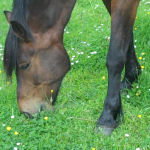
Well, asymmetry is not a problem for a horse. Actually, it is precisely the contrary: in the wild it is important for survival.
For example, the horizontal imbalance creates automatic locomotion because the weight will tend to move towards where the majority of the weight is. Therefore, walking with more weight on the front legs is beneficial for the horse because it will make the horse move forward automatically, and that’s convenient because as the grass is eaten, it’s useful to take a step forward.
With humans it is the same: If you are for example right-handed, this will ensure that you are stronger and quicker with this hand. When you need to open a door in case of an emergency, you don’t need to think which hand you should use, so you can save time and act in an adequate and effective way.
So all good so far, but:
Problems arise when we start riding and our weight is added to the horse.
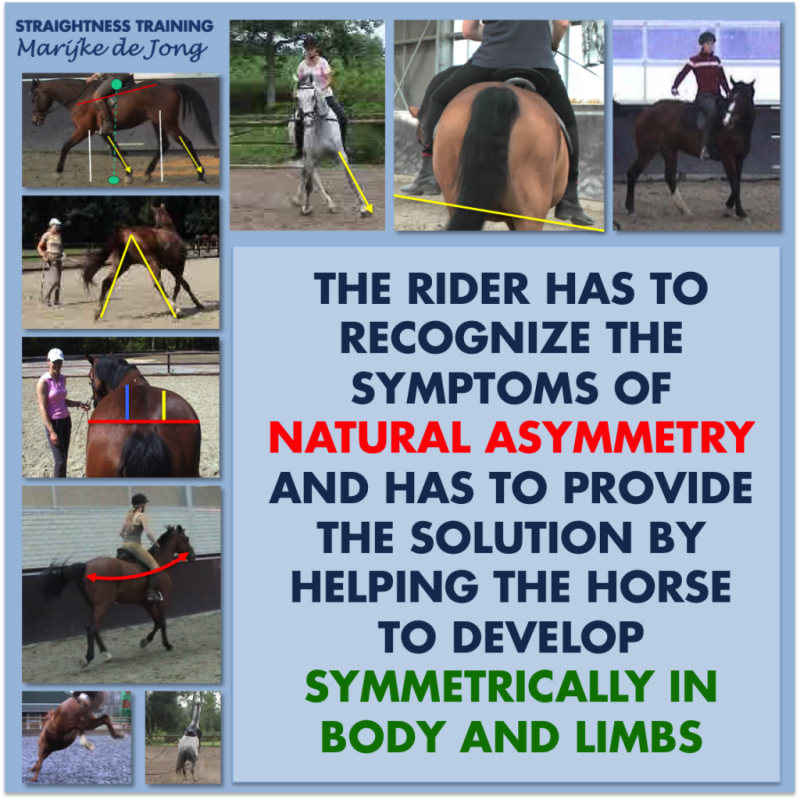
You know, if we do not correct all dimensions of asymmetry, this usually results in an imbalance in the muscles in the topline and underline of the horse. This can lead to tension, problems in the back, and overstraining of the front legs.
And tension in the back leads often to stress and imbalance in the mind.
So we have to recognize the natural asymmetry and imbalance and need to help the horse to develop the horse symmetrically in body and limbs.
Solution
Now how do we help our horse to get rid of the imbalance? The answer is simple. Natural asymmetry is a muscle problem which can be solved by training the muscles.
This training is called Straightness Training. The end result is a straightened horse.
A straightened horse:
- is symmetrical developed in body and limbs;
- is symmetrical in movement and can perform all exercises equally to the left and to the right;
- will let itself collect and lift in the front.
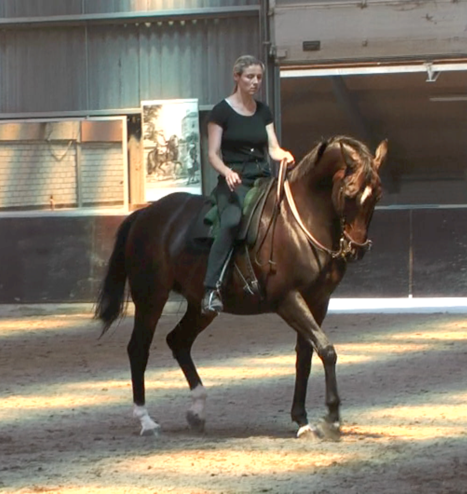
Through Straightness Training:
- Our horse will develop physically: he becomes more flexible and maneuverable, can bend more in the hindquarters and is easy and light in collection.
- Our horse will develop mentally: he will be without stress, he will be confident and secure and he will cooperate in harmony with us!

